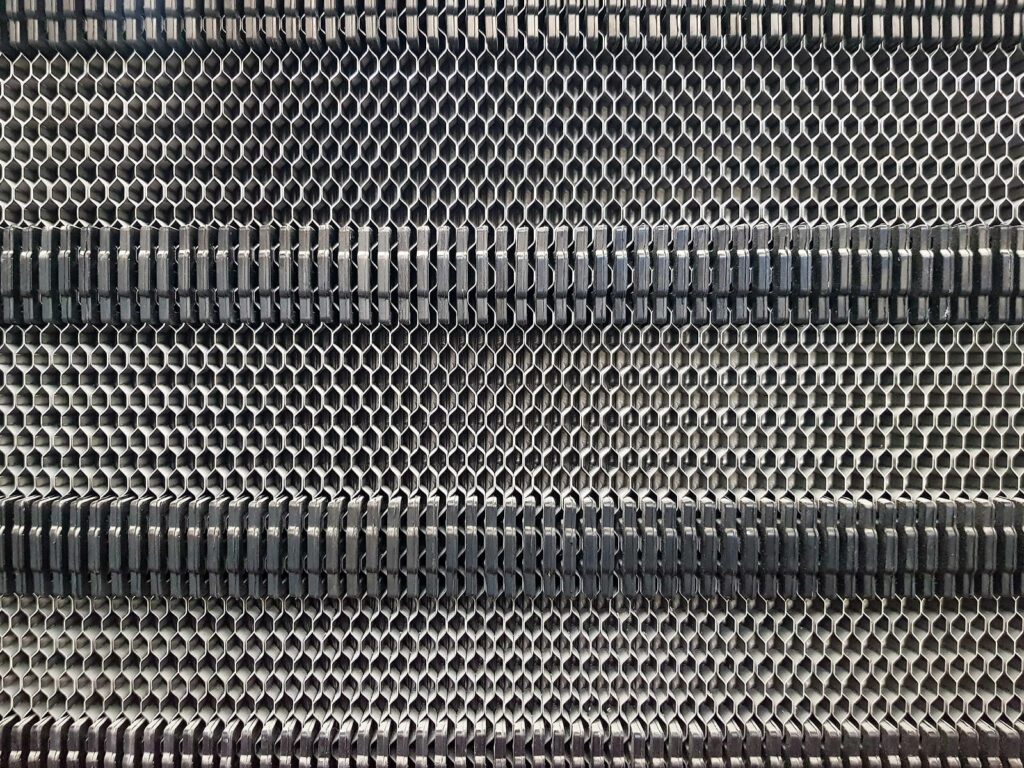Have you ever looked at your furnace and wondered, “What does a heat exchanger do?”
Heat exchangers are often used with smokestacks to recover heat from waste gases; they’re also found in engines, air conditioners, refrigerators, and gas boilers. In fact, the heat exchanger is the largest part of your furnace. It’s a device that allows heat to move from one medium to another.
The more precise definition is that heat is allowed to pass from one fluid or gas to another, but without the two different media ever mixing or being in direct contact with one another.
What Does a Heat Exchanger Do in a Furnace?
A furnace that burns natural gas or propane fuel produces by-products of its exhaust and combustion process. Collectively known as flue gas, these compounds pass through the heat exchanger, heating up the metal while it travels to the exhaust outlet. The air that circulates over the outside of the heat exchanger heats up as a result.
Depending on the furnace, it may have one or two heat exchangers. The primary unit contains the hottest gas and is placed closest to the burners. High heat can cause heat stress and cracking, while a single-heat-exchanger-furnace is 70% to 80% efficient at best.
A high-efficiency furnace, which is over 90% efficient, has primary and secondary heat exchangers. The secondary unit receives combustion exhaust that leaves the primary device. Additional heat is released while the formation of water vapor releases latent heat, which increases the efficiency level. Secondary heat exchangers are often made of heat-, moisture-, and acid-resistant stainless or coated steel.
Key Aspects of Heat Exchanger Design
There are various types of heat exchangers, each with different design characteristics. The main design considerations are the primary circuit fluid type, temperature, and flow rate; this is typically the hot fluid. What’s to be taken out of the primary circuit is also a key trait. It can be to dissipate heat or reach a target outlet temperature. A third design aspect is the secondary circuit fluid type/temperature/flow rate, which generally refers to the coolant used.
Other Aspects Include:
- Fluid Type: The type of unit and materials available determine what fluid is most suited for it. Depending on the heat exchanger, it may work with oil, water, sea water, or more corrosive fluids like chlorinated salt water, acids, refrigerants, etc.
- Temperature Cross Over: This is when the temperature of both circuits in the device (liquid cooled exchanger) start to cross over, which reduces efficiency. For example, the efficiency of an oil cooler can be increased by increasing coolant flow rate.
- Heat Exchanger Pass: Pass is the movement of fluid from one end to another. In a single pass heat exchanger, fluid enters one side and exits another, while in a double pass device, fluids enter and exit from the same location. In a triple pass system, fluid passes all the way through, then back to the same side, and across the heat exchanger again before reaching the outlet.
How Is Heat Exchanger Efficiency Determined?
The performance of a heat exchanger is a major determinant in how efficient your furnace is. Key factors to consider include temperature differential, or the difference between the hot fluid and coolant. The coolant must always be at a lower temperature and, the lower it is, the more heat it will remove from the fluid.
Flow rate also affects efficiency. Generally, a higher flow rate makes the device transfer heat more effectively, but also increases mass, velocity, and pressure loss. A greater flow rate can make it more difficult to remove energy. Also, the best way to install the unit is with the coolant/fluid flowing in opposite directions of one another. It’s important to always follow the manufacturer’s instructions during installation.
Contact Black Hills Inc. Home Services
We’re known for high-quality furnace repair in Olympia, WA, and provide professional heat exchanger installation and repair as well. Our customers can expect straight-forward pricing, a 100% satisfaction guarantee, and prompt, reliable service. Black Hills is available 24/7 for emergencies, while we offer a number of financing options as well. Schedule heat exchanger and/or furnace cleaning and repair today by calling 888-978-2917.

